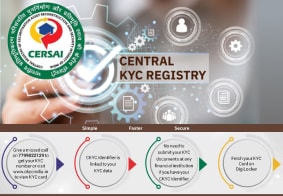CKYC Registry
-
Customer Service Contact us Service request Locate a branch
Find all the help you need
Scan the QR, get our app, and find help on your fingertips

Help CenterSupport topics, Contact us, FAQs and more
-
Login
Are you ready for an upgrade?
Login to the new experience with best features and services
-
Login
Are you ready for an upgrade?
Login to the new experience with best features and services
- Accounts
-
Deposits
IDFC FIRST Bank Deposits
View all Deposits -
Loans
IDFC FIRST Bank Loans
View all Loans - Wealth & Insure
-
Payments
IDFC FIRST Bank Payments
View all Payments -
Cards
IDFC FIRST Bank Cards
View all Cards - Blogs
- Corporate Account
-
Cash Management Services
IDFC FIRST Bank Cash Management Services
View all Cash Management Services - Supply Chain Finance
-
Corporate Lending
IDFC FIRST Bank Lending
View all -
Treasury
IDFC FIRST Bank Treasury
See more details - NBFC Financing
Support topics, Contact us, FAQs and more
- IDFC FIRST Bank Accounts
-
Savings Account
-
Corporate Salary
Account -
Senior Citizens
Savings Account -
First Power
Account -
Current Account
-
NRI Savings
Account -
TASC Institutional
Account -
Savings Account
Interest Calculator
- IDFC FIRST Bank Deposits
-
Fixed Deposit
-
Recurring Deposit
-
NRI Fixed Deposit
-
Safe Deposit Locker
-
FD Calculator
-
RD Calculator
- IDFC FIRST Bank Loans
-
Personal Loan
-
Consumer Durable
Loan -
Home Loan
-
Business Loan
-
Professional Loan
-
Education Loan
-
New Car Loan
-
Pre-owned Car Loan
-
Two Wheeler Loan
-
Pre-owned Two
Wheeler Loan -
Commercial Vehicle
Loan -
Gold Loan
-
Loan Against Property
-
Loan Against Securities
-
Easy Buy EMI card
-
Personal Loan
EMI Calculator -
Education Loan
EMI Calculator -
Home Loan
EMI Calculator
- IDFC FIRST Bank Wealth & Insure
-
FIRST Select
-
FIRST Wealth
-
FIRST Private
-
Mutual Funds
-
Sovereign Gold Bond
-
Demat Account
-
Term Insurance
-
Life Insurance
-
Health Insurance
-
General Insurance
-
Bonds
-
Loan Against
Securities -
Portfolio Management
Service
- IDFC FIRST Bank Payments
-
FASTag
-
Credit Card
Bill Payments -
UPI
-
Funds Transfer
-
Forex Services
-
Pay Loan EMI
- IDFC FIRST Bank Cards
-
Ashva :
Metal Credit Card -
Mayura :
Metal Credit Card -
FIRST Millennia
Credit Card -
FIRST Classic
Credit Card -
FIRST Select
Credit Card -
FIRST Wealth
Credit Card -
FIRST WOW!
Credit Card -
Deals
-
Debit Cards
-
Co-branded Cards
-
Credit Card
EMI Calculator -
FIRST Corporate
Credit Card -
FIRST Purchase
Credit Card -
FIRST Business
Credit Card
- Premium Metal Credit Cards
-
AshvaLifestyle1% Forex₹2,999
-
MayuraLifestyleZero Forex₹5,999
-
FIRST PrivateInvite Only
- Best for travellers
-
MayuraZero ForexMetal₹5,999
-
Ashva1% ForexMetal₹2,999
-
FIRST WOW!Zero ForexTravelLifetime Free
-
FIRST SWYPTravel OffersEMI₹499
-
FIRST Select1.99% ForexLifestyleLifetime Free
-
FIRST Wealth1.5% ForexLifestyleLifetime Free
-
Club VistaraTravelLifestyle₹4,999
-
IndiGo IDFC FIRST Dual Credit CardTravelLifestyle₹4,999
- Max benefits, Free for life
-
FIRST Classic10X RewardsShoppingNever Expiring Rewards
-
FIRST Millennia10X RewardsShoppingNever Expiring Rewards
-
FIRST Select10X RewardsLifestyle1.99% Forex
-
FIRST Wealth10X RewardsLifestyle1.5% Forex
-
FIRST WOW!RewardsTravelZero Forex
-
LIC ClassicRewardsInsuranceShopping
-
LIC SelectRewardsInsuranceShopping
- Reward Multipliers
-
AshvaLifestyleMetal₹2,999
-
MayuraLifestyleZero Forex₹5,999
-
FIRST ClassicNever Expiring RewardsShoppingLifetime Free
-
FIRST MillenniaNever Expiring RewardsShoppingLifetime Free
-
FIRST SelectNever Expiring RewardsLifestyleLifetime Free
-
FIRST WealthNever Expiring RewardsLifestyleLifetime Free
- Rewards & Credit on UPI
-
FIRST Power+FuelUPI₹499
-
FIRST PowerFuelUPI₹199
-
FIRST EA₹NVirtual1% Cashback₹499
-
FIRST DigitalVirtualUPI₹199
-
IndiGo IDFC FIRST Dual Credit CardUPITravelDual cards
- Fuel and Savings
-
FIRST PowerRewardsUPI₹199
-
FIRST Power+RewardsUPI₹499
-
LIC ClassicRewardsInsuranceShopping
-
LIC SelectRewardsInsuranceShopping
- Express and Flaunt
-
AshvaMetal1% Forex₹2,999
-
MayuraMetalZero Forex₹5,999
-
FIRST SWYPEMIOfferMAX₹499
-
FIRST MillenniaRewardsShoppingLifetime Free
- FD Backed rewarding Credit Cards for all
-
FIRST EA₹NVirtualCashback₹499
-
FIRST WOW!Zero ForexTravelLifetime Free
-
CreditPro Balance TransferTransfer & SaveReduce InterestPay Smartly
- IDFC FIRST Bank NRI Forex Solutions
-
Send money to India-Wire transfer
-
Send money to India-Digitally
-
Send money abroad
-
Max Returns FD (INR)
- IDFC FIRST Bank MSME Accounts
-
Platinum Current
Account -
Gold
Current Account -
Silver Plus
Current Account -
Merchant Multiplier
Account -
Agri Multiplier
Account -
TASC Institutional
Account -
Dynamic Current
Account -
World business
Account -
First Startup
Current Account
- IDFC FIRST Bank Business Loans
-
Business Loan
-
Professional Loan
-
Loan Against Property
-
Business Loan for Women
-
Working Capital Loan
-
Construction Equipment Loan
-
Machinery Loan
-
Healthcare Equipment Loan
- IDFC FIRST Bank Business Solutions
-
Payment Solutions
-
Tax Payments
-
Doorstep Banking
-
Point of Sale (POS)
-
Escrow Accounts
-
NACH
-
Payment Gateway
-
UPI
-
Virtual Accounts
-
As per amendment in the Income Tax Rules, PAN or Aadhaar are to be mandatorily quoted for cash deposit or withdrawal aggregating to Rupees twenty lakhs or more in a FY. Please update your PAN or Aadhaar. Kindly reach out to the Bank’s contact center on 1800 10 888 or visit the nearest IDFC FIRST Bank branch for further queries.
-
-
Most Searched
Sorry!
We couldn’t find ‘’ in our website
Here is what you can do :
- Try checking the spelling and search
- Search from below suggestions instead
- Widen your search & try a more generic keyword
Suggested
Get a Credit Card
Enjoy Zero Charges on All Commonly Used Savings Account Services
Open Account Now
Stay unbreakable: The complete guide against digital frauds
Key Takeaways
Cybersecurity threats are rising, with online banking fraud cases quadrupled in 2023-24.
Common digital frauds include social engineering, malware, ATM skimming, SIM swaps, and deepfake scams, making awareness crucial.
Best security practices like multi-factor authentication, strong passwords, and avoiding public Wi-Fi can protect your accounts.
IDFC FIRST Bank offers advanced fraud detection, encryption, and 24/7 support to ensure safe online banking.
India's digital banking revolution has simplified the lives of many—but not without additional risks. The financial year 2023-2024 saw an alarming surge in cyber fraud incidents, with the number of cases quadrupling from 75,800 in the previous year to a staggering 2,92,800.
While online banking has transformed how we manage money, it has also opened the door for cybersecurity threats. Individuals unaware of internet banking practices are not the only targets of such attacks—even seasoned banking customers have fallen victim to them.
This article covers everything about fostering a secure banking experience in this digital age. From recognising the most common types of banking frauds to guiding victims on recovering from a cyber attack, understand the essentials to protect yourself.
READ MORE
Common online banking frauds and threats
From sophisticated malware attacks to deceptive social engineering scams, cybersecurity threats come in a variety of shapes and sizes. Recognising the warning signs can help you stay one step ahead of cybercriminals and protect your finances. These banking frauds usually fall under three categories.
1. Account Takeover (ATO) fraud
These cybersecurity threats work insidiously to gain unauthorised access to a victim's banking information. They often involve identity theft to carry out fraudulent transactions. Common ATO frauds include –
a. Social engineering scams
These scams emotionally manipulate victims into revealing sensitive banking information. Fraudsters often pose as bank officials, government agents, or personal contacts. By creating panic with claims of unauthorised transactions, account suspensions, or personal emergencies, they trick victims into sharing one-time passwords (OTPs), PINs, or login credentials.
b. Call forwarding scam
This cybersecurity threat uses the quick codes of your service provider. They then forward banking phone calls, OTPs, and verification messages to fraudsters. Victims often receive a call from a scammer pretending to be a banking representative who instructs them to dial *401# on their phone. Once enabled, they gain access to all your incoming calls and messages, allowing them to drain your bank accounts.
2. Authorised Push Payment (APP) scams
Also known as Authorised Transfer Scams (ATS), these frauds manipulate victims into willingly sharing banking details, usually by impersonating loved ones and trusted entities. They include –
a. Ransomware attacks
This cybersecurity breach occurs with the help of malicious software. Once installed into the victim's device, it encrypts their data and displays a ransom note demanding payment—often in cryptocurrency. Internet users commonly download ransomware via phishing emails or compromised websites. Once activated, the victim is locked out of their data and may even lose control of their entire device.
b. Malware and spyware
Malware, or malicious software, infiltrates systems upon installation, while spyware secretly collects user information. Often posing as legitimate files, fraudsters trick users into downloading these programs through fake apps, email attachments, or infected websites. Once installed, they can record your keystrokes (how you type your passwords), steal login credentials, and grant remote access to your devices.
c. Skimming (ATM scams)
Skimming refers to illegally capturing a user’s credit or debit card details via hidden devices placed on ATMs and payment terminals. When victims unknowingly insert their card, the device clones its information so criminals can use it for withdrawals and fraudulent transactions. Signs of skimming include loose or bulky ATM card slots, misaligned keypads, and tiny hidden cameras.
d. SIM swap banking fraud
SIM swap fraud occurs when criminals duplicate the victim's SIM card to intercept OTPs and banking information. This threat usually begins with a data breach via social engineering to gain the target's personal details and contact their telecom provider. Posing as the victim, the fraudster requests a SIM replacement and gains control over the phone number, allowing unauthorised access to bank accounts.
e. Man-in-the-middle (MITM) attacks
Fraudsters carry out MITM attacks by inserting themselves in a channel of communication between users and banking servers. This cybersecurity threat usually exploits unsecured public Wi-Fi networks to intercept information from online banking sessions. Victims unknowingly share their data with fake websites, allowing attackers to steal passwords, make transactions, and access financial accounts.
3. Deepfake scams
A rising cybersecurity threat in recent years, these scams use AI to mimic trusted individuals and carry out ATO as well as APP frauds. Signs of this threat include unnatural facial movements, robotic speech, and urgent financial demands.
Types of social engineering scams
Name |
What it means |
Phishing |
Scammers steal banking information by impersonating banks or other legitimate entities through deceptive emails or websites |
Vishing |
Voice-phishing or vishing occurs through phone calls where scammers pose as trusted officials or loved ones to extract confidential details |
Smishing |
SMS-phishing or smishing occurs through misleading text messages that trick individuals into revealing banking details |
Quishing |
QR code-phishing, or quishing, misleads victims to scan infected QR codes that lead to malicious websites designed for banking data theft |
Best cybersecurity practices for safe online banking
As scammers adopt more advanced techniques, banking customers must become equally vigilant. Following strict bank security measures can go a long way in protecting your personal data and funds.
1. Verify before you click
a. Fake messages and fraudulent phone calls often prompt you to click on a link or take certain steps by creating a sense of urgency
b. Always take your time and check for spelling errors, generic greetings, or persistent payment requests
c. When visiting your bank's official website, type the URL manually instead of relying on search results
d. If you receive a suspicious call, hang up immediately and get in touch with your bank's customer service
2. Create strong passwords
a. Using a weak combination, like 123456 or your birth date, or recycling passwords across platforms makes you vulnerable to attacks
b. Always choose a mix of uppercase and lowercase letters, numbers, and special characters, and set unique passwords for different accounts
c. If keeping track of different login credentials is difficult, use a password manager to generate and store passwords securely
d. Review your credentials periodically and try changing your password every 3-6 months to reduce security risks
3. Multi-factor authentication (MFA)
a. MFA adds an extra layer of security to your mobile banking experience by including an additional login step
b. Traditionally, this authentication relied on providing certain information, such as answering a security question, to access the account
c. Today, MFA usually takes place in the form of OTPs generated through SMS and authentication apps to create a safer banking experience
d. Some apps and websites also use biometrics (like facial recognition and fingerprint scans) to authenticate your logins
4. Keep your devices secure
a. Periodically update and scan your computer and mobile devices to ensure protection against malware and security breaches
b. Always download apps from official stores (such as Google Play or App Store) and avoid installing APK files to safeguard your phone
c. Disable Bluetooth settings unless needed, and avoid using unsecured public Wi-Fi networks to log into your bank accounts
d. If you must use a public network, enable a virtual private network (VPN) for added protection against cybersecurity threats
5. Only use official channels
a. Always use official communication channels, like verified apps, helplines, or emails, to contact your banking partner
b. Beware of sharing any confidential details (like OTPs or PINs) with scammers impersonating bank representatives
c. Remember that legitimate banks never ask for passwords or security-related information over calls, emails, or messages
d. When visiting a bank website, check for "https://" and an official domain to ensure its legitimacy and avoid phishing attempts
6. Monitor your account activity
a. Frequent account monitoring helps you detect the early signs of unauthorised activity before significant damage is done
b. Enable SMS/email alerts for every transaction, including login attempts, to get notifications of all account-related actions
c. Set limits for debit card usage, fund withdrawal, etc., to minimise greater losses due to fraudulent transactions
d. If you spot any unrecognised transactions, report them to your bank immediately to prevent further loss and secure your account

Steps to take if you detect cybersecurity fraud
Even with the best cybersecurity measures in place, no one is completely immune to banking fraud. If you or someone you know suspect fraudulent activity in your bank accounts, follow these steps to secure your funds immediately –
1. What to do once you notice unauthorised access
As soon as you notice suspicious activity, immediately change all passwords as a first step. Once complete, contact your bank's customer support to report the fraud and lock the account.
2. How to report and recover lost funds
File a detailed complaint with your bank as well as the cybersecurity government portal (www.cybercrime.gov.in) to initiate the resolution process. This increases the odds of recovering lost funds through legal intervention.
3. How banks support and assist fraud victims
Once your bank has investigated suspicious transactions, you may be eligible for reimbursement as per security policies. Customer support will also help you implement stricter online security measures to rebuild trust.
4. Legal protections and consumer rights in India
If your bank fails to resolve the issue, escalate a complaint to the Banking Ombudsman. The Reserve Bank of India has a zero-liability policy for incidents reported in three working days or those caused by a bank's negligence or third-party interventions.
Fighting cybersecurity threats: Why choosing the right bank matters
The rise of internet and mobile banking has made financial institutions more vigilant about customer protection. Today, banks use various security measures like end-to-end encryption, AI-powered fraud detection, etc., to ensure a safe experience for customers. However, choosing a reliable banking partner is crucial for the state-of-the-art protection of your finances.
This is where IDFC FIRST Bank stands out with its robust online security measures, such as –
- Secure online banking with encryption, device safeguards, and third-party oversight
- Strict password policies with minimum length and special character requirements
- Advanced fraud detection systems to actively identify and prevent thefts
- Multi-factor authentication, including biometric security, for added protection
- Continuous account monitoring with real-time SMS/email alerts for all transactions
- 24/7 customer support to assist with security concerns or fraud incidents
With secure internet and mobile banking facilities, IDFC FIRST Bank empowers you to manage your money with confidence. Its strict security policies allow you to focus on your finances without worrying about fraud or cybersecurity threats.
Cybersecurity: The invisible shield that fortifies your finances
Banking frauds don’t just take a financial toll—they leave victims unsettled and anxious long after the breach has been addressed. But with proactive cybersecurity measures, you don't have to suffer through sleepless nights over the possibility of data theft.
A stable financial future starts with the right banking partner that prioritises your safety as much as you do. Choose IDFC FIRST Bank for robust security that helps you stay one step ahead of fraudsters because true financial freedom comes with knowing your assets are safe.
Disclaimer
The contents of this article/infographic/picture/video are meant solely for information purposes. The contents are generic in nature and for informational purposes only. It is not a substitute for specific advice in your own circumstances. The information is subject to updation, completion, revision, verification and amendment and the same may change materially. The information is not intended for distribution or use by any person in any jurisdiction where such distribution or use would be contrary to law or regulation or would subject IDFC FIRST Bank or its affiliates to any licensing or registration requirements. IDFC FIRST Bank shall not be responsible for any direct/indirect loss or liability incurred by the reader for taking any financial decisions based on the contents and information mentioned. Please consult your financial advisor before making any financial decision.
The features, benefits and offers mentioned in the article are applicable as on the day of publication of this blog and is subject to change without notice. The contents herein are also subject to other product specific terms and conditions and any third party terms and conditions, as applicable. Please refer our website www.idfcfirstbank.com for latest updates.























